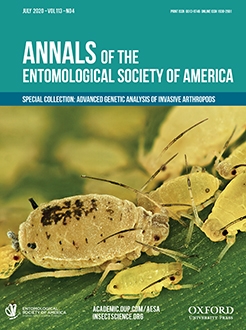Exotic fruit flies in the family Tephritidae pose a threat to U.S. agriculture and natural resources. As part of ongoing fruit fly detection and exclusion programs, invasive fruit fly adults are periodically trapped in and introduced populations are eradicated from two major fruit producing states: California and Florida. Although the pathways used by flies to enter these states are not clear, one possible introduction pathway is hand-carrying fruits and vegetables infested with eggs or larvae through ports of entry during border crossings or international air travel. These collections represent an important resource for determining what species are most commonly associated with particular ports of entry, their host plants, and source country, making the identification of the intercepted larvae fundamental. Here, we examine cytochrome c oxidase subunit I sequences obtained with Sanger DNA sequencing and Single Molecule Real-time sequencing (SMRT) technologies on a collection of hundreds of intercepted larvae and pupae that are suspected to be fruit pests found in the subfamily Dacinae, in addition to a collection of field-caught flies. Utilizing Pacific Biosciences (PacBio) Circular Consensus Sequencing, we sequenced thousands of independent amplicons in a single SMRT cell. We present our implementation of PacBio's method by describing wet-lab procedures as well as analytical protocols to automate the process. Finally, for the intercepted material, we compared the generated SMRT data to sequences produced with Sanger and evaluate their quality as a means to identify flies. Using intercepted material, we obtained a sequencing success of over 88% with PacBio's SMRT sequencing. As the spread of invasive insects grow, so will the size of collections of intercepted material; we found technologies such as SMRT sequencing to be excellent resources to simplify the generation of large amounts of molecular data and to reduce or eliminate all together the manipulation of the sequences.
How to translate text using browser tools
16 March 2020
Implementing Low-Cost, High Accuracy DNA Barcoding From Single Molecule Sequencing to Screen Larval Tephritid Fruit Flies Intercepted at Ports of Entry
Ivonne J. Garzón-Orduña,
Scott M. Geib,
Lisa Ledezma,
Forest T. Bremer,
Norman B. Barr
ACCESS THE FULL ARTICLE
It is not available for individual sale.
This article is only available to subscribers.
It is not available for individual sale.
It is not available for individual sale.
Bactrocera
circular-consensus sequencing
high-throughput sequencing
pacBio HiFi
pest identification






